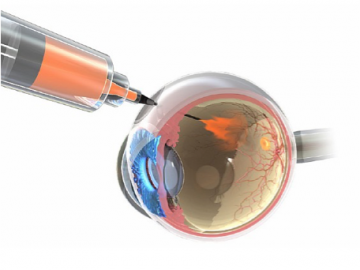 Many mainstream news outlets recently carried the story
of three elderly women in Florida blinded by an unapproved so called stem cell treatment at a for-profit clinic there.
Many mainstream news outlets recently carried the story
of three elderly women in Florida blinded by an unapproved so called stem cell treatment at a for-profit clinic there.
1.Overlooked by many of those media reports, however, was the parallel story of the first use of an experimental autologous stem cell treatment for age-related macular degeneration (AMD).
2.The contrast could not be more stark between the two stories. On the one hand, the unapproved use of autologous adipose tissue at the Florida clinic, reportedly taken from
the abdomens of the three women and injected bilaterally, directly into their eyes.
3.On the other, the meticulous and carefully designed technique employed by Japanese research- ers, treating one eye of a carefully selected patient with polypoidal choroidal vasculopathy.
Both episodes were documented side by side in the March 16 issue of the New England Journal of Medicine, along with a scathing editorial by George Q. Daley, MD, PhD, noting the “polar extremes” demonstrated in the conduct of the Japanese researchers compared with the practitioners at the for-profit Florida clinic.
4.The good news: Mandai et al reported that they suc- cessfully generated induced pluripotent stem cells (iPSCs) from fibroblasts from the patient’s skin and cultured them into a monolayer sheet of retinal pigment epithelium (RPE) cells. After extensive characterization of the iPSC-RPE cell line, including whole-genome sequencing and expression analyses, the sheet was implanted in the patient’s eye. In
this procedure, surgeons first removed the neovascular membrane and then implanted the sheet under the fovea. Postoperatively, the patient experienced elevated intraocular pressure (IOP) that was controlled by medication, and her vision stabilized at 20/200 without further deterioration. Her scores on a questionnaire indicated improvements in visual function and general health.
The not-so-good-news: As has been widely reported, three women are now blind after receiving a so-called stem-cell treat- ment at a clinic called Bioheart, Inc., since renamed US Stem Cell. Ophthalmologists at Bascom Palmer Eye Institute who later treated the women described their efforts in the New England Journal article. Sequelae of the treatments included ocular hypertension, hemorrhagic retinopathy, vitreous hemorrhage, combined traction and rhegmatogenous retinal detachment, and lens dislocation. At 1 year follow-up, the patients’ visual acuity ranged from 20/200 to no light perception.